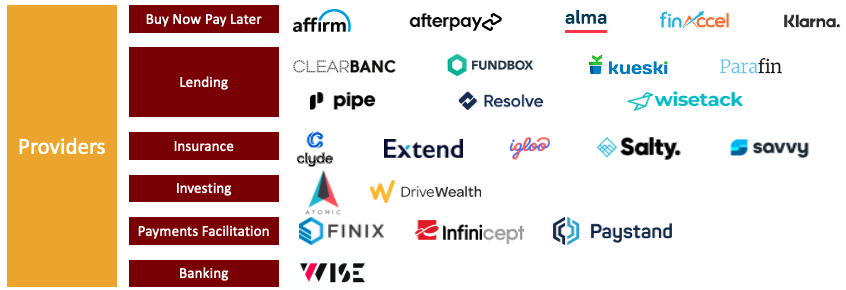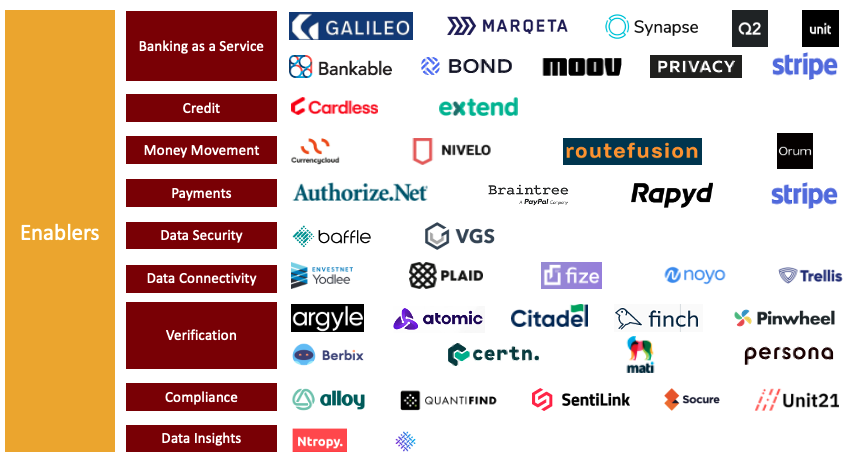Stripe recently made headlines with its entrance into the banking world with Stripe Treasury. The news follows Google’s banking and payments announcement along with IPO bound companies such as Airbnb, DoorDash and Affirm all mentioning “financial services” in S-1 filings — a clear signal of how the sector will continue to stay red hot for the coming years.
What do all of these companies have in common? The subtle, almost unnoticeable, embedding of financial services. There has been an influx of new fintechs democratizing how to embed financial services across the spectrum, from investing, insurance, lending to banking. While many of these companies are in their nascent stages, they are achieving increasingly high valuations. Why?
The ability to be at the right place at the right time, supporting consumers and merchants alike, where they want, how they want it and when they want it — cannot be understated.
Because today, customers yearn for greater personalization and less friction while brands are looking for ways to improve monetization seamlessly. The ability to be at the right place at the right time, supporting consumers and merchants alike, where they want, how they want it and when they want it — cannot be understated.
At the heart of embedded finance is the benefit of enabling any brand or merchant to rapidly, and at low cost, integrate innovative financial services into new propositions and customer experiences. To avoid developing noncore product additions in-house, companies will look to “building blocks” (or APIs) to take advantage of the big opportunity to extend customer lifetime value and address a wider variety of needs in one place.
This holds true for startups, digitally native brands and established brands, online and offline. For fledgling fintech startups or brands that want to provide financial services to their customers, working with APIs are often a no-brainer given the costs associated with building integrations in-house.
But imagine if you are a global airline company and the benefit of not having to staff a know-your-customer compliance or fraud detection team. Or for lenders who can minimize risk and increase speed by not having to request a pay stub or personal information verification?
The end goal is to earn and build customer loyalty while generating new revenue streams. Historically, established brands have been served by banks with co-branded and “affinity” programs or partnerships. But this “offline” model is usually white-label or very “human-in-the-loop” with limited and inflexible capabilities. However, APIs can change this — a great example is Starbucks Rewards, heralded as a successful case of data, rewards and loyalty. No longer are brands just reselling leads, businesses can now directly participate in the product and distribution to improve margins.
Today, embedded finance is being used in a variety of ways: In the product (e.g., Tesla’s insurance offering), in distribution channels (e.g., a startup selling insurance during car purchases), and in the technology layer (or building blocks) to improve the overall functionality (e.g., a lender leveraging a data API for instant underwriting).
We typically separate building blocks into two buckets: providers (“plug and play” applications) and enablers (those that help financial services to be offered).

Image Credits: Cathay Innovation (opens in a new window)

Image Credits: Cathay Innovation (opens in a new window)
There are many new entrants and it’s not one size fits all. Some have data advantages, some distribution while some enable new greenfield opportunities via delivery of the customer experience. While these “digital wrappers” around financial services infrastructure seem to be working, the question remains — who will become a market leader? Do enablers eventually become providers?
 from eCommerce – TechCrunch https://ift.tt/3p3Bk9Y
from eCommerce – TechCrunch https://ift.tt/3p3Bk9Y via IFTTT
via IFTTT
No comments:
Post a Comment